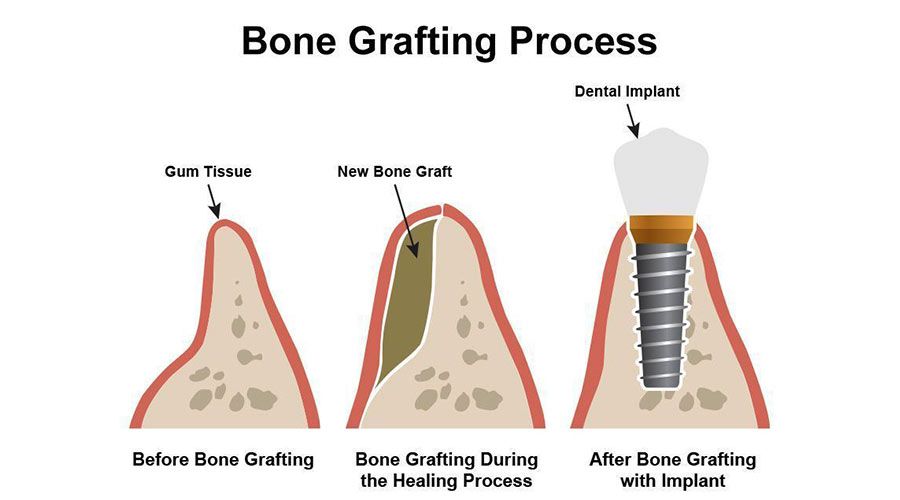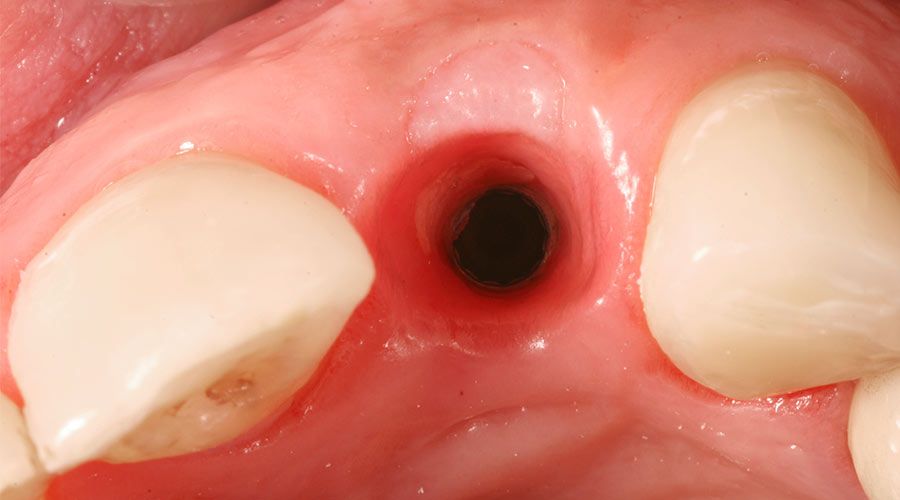Bone Grafting for Dental Implants
Missing teeth can make eating and speaking challenging and impact your confidence. If your smile is incomplete, dental implants offer a long-lasting solution. However, in order to qualify for treatment, you must have sufficient jawbone tissue to support implant posts. Unfortunately, bone recession is a common side effect of tooth loss. To supplement existing bone and encourage new growth, your doctor may recommend bone grafting for dental implants. A graft can restore candidacy for implant posts, and in turn, improve the health of your smile.
The Dental Implant Revolution
Previously, patients were limited to replacing missing teeth with a fixed bridge or removable denture. However, neither option is ideal. To place a bridge, the doctor needs to reshape adjacent healthy teeth, which can jeopardize their structural integrity. Removable dentures present different challenges. Partial restorations must be held in place by metal clasps, which are highly visible. Full removable dentures can cause embarrassment if they shift out of place when you eat or speak.
Dental implants are considered the gold standard for tooth replacement. These small titanium posts are embedded in the jaw and create a strong, sturdy foundation for dental crowns, bridges, and dentures. In addition to the aesthetic and functional benefits that come with replacing missing teeth, dental implants help to keep the jawbone strong and healthy. Though restorations will need to be replaced in the future, dental implants are designed to provide a lifetime of support.
When Is Bone Grafting Recommended?
Your dentist will most often recommend a bone graft after tooth loss. In a healthy smile, the dental roots stimulate the jawbone when you chew or bite down. Without this stimulus, the jaw can begin to shrink. Pronounced bone recession can result in more widespread tooth loss and changes to your face shape.
Thanks to bone grafting, most healthy patients will qualify for dental implants after treatment.
Bone grafting is most commonly performed in preparation for dental implant surgery. Like natural teeth, these posts rely on nearby bone tissue for support. If you have suffered bone loss, you face a high risk of implant failure. By building up the diminished areas of your jaw, your dentist can increase the likelihood of a successful treatment.

Types of Bone Grafts
A bone graft involves surgically implanting bone or bonelike material at the site of jawbone degeneration. There are several types of grafts that can be used during surgery, including:
- Autograft: This graft is harvested from your own body. Bone is typically taken from the hard palate or chin. Though there is no risk of allergic reaction with an autograft, it does require two rounds of surgery.
- Allograft: In some cases, an allograft, or donor tissue, provides the best solution. Many patients prefer this method, as it eliminates the need for a second surgery. However, there is a small chance that your body will reject the new material.
- Xenograft: Less commonly, your doctor could use animal bone tissue. The most frequently used xenograft for dental implants is bovine (cow) bone. Unlike humane bone, which induces bone formation, bovine acts almost exclusively as a calcified placeholder. In time, newly generated bone will replace bovine tissue as it resorbs.
- Alloplast: This graft consists of synthetic material. Alloplasts are typically made from hydroxyapatite, though they can also be composed of calcium sulfate, calcium carbonate, and other polymers. Though this method is safe, it does pose a risk for both allergic reaction and rejection.
The best option for you will depend on your health, lifestyle, budget, and personal preferences.

Preparing for Bone Grafting
Before recommending a bone graft, your dentist will thoroughly evaluate your jaw and overall oral health. X-rays or other advanced images, such as computed tomography (CT) scans, enable your doctor to assess the stability of your bone and identify areas of tissue loss. Your doctor can then determine the appropriate size and location for the graft.
In addition to planning your procedure, your dentist can outline steps you can take at home to ensure surgery goes smoothly. If you are a smoker, you will need to quit at least three weeks before treatment. Similarly, you may need to stop taking medications such as anticoagulants and aspirin two weeks prior to bone grafting. It is important to eat a healthy diet in the weeks leading up to surgery. Incorporate plenty of lean proteins and vitamin-rich produce, which can encourage healing.
What to Expect during Treatment
Prior to bone grafting, a local anesthetic will be administered to numb the area. You may also elect to receive sedation to help you relax. Nitrous oxide, oral sedation, and intravenous (IV) medications are all safe and reliable choices.
Once you are comfortable, the doctor will create a small incision above the recessed area and place the new tissue. Some dentists will also apply a special membrane over the graft to promote tissue regeneration. This is called guided tissue regeneration, or GTR. Once the bone graft has been secured with small posts, the doctor can close the incision with sutures. Over the next six to nine months, the graft will fuse with surrounding tissue in a process known as osseointegration. This is integral to the success of any future dental implant treatment, as it creates a strong base for implant posts.
Sinus Lifts and Ridge Augmentation
Depending on the shape and size of your jaw, you may require a more specialized procedure. A low or drooping upper jaw may need to be lifted to make space for implant posts. Also known as a sinus lift, this procedure involves raising the sinus floor and filling the space beneath with grafting material. A sinus lift can prevent damage to the sinuses from implant placement.
Ridge augmentation is a form of bone grafting that focuses exclusively on the alveolar ridges. These lines of bone run just below the gum tissue beneath the teeth. In many cases, this procedure will take place right after tooth extraction. Ridge augmentation can help prepare you for implant placement, and it can also provide a more secure fit for removable dentures.
Recovery after Your Procedure
After a bone grafting procedure, it is common to experience some discomfort, as well as bleeding, swelling, and inflammation. To relieve pain and swelling, you can take over-the-counter or prescription anti-inflammatories. You should also eat a soft diet for a few days and avoid strenuous exercise. Though you will be able to reintroduce more food over time, you may need to avoid spicy, crunchy, and hard foods for a few weeks. While it is important to practice good oral hygiene, make sure to brush gently around the surgical site to avoid irritation.
Temporary side effects of bone grafting should subside within one or two weeks, but it will usually take six to nine months for your jaw to heal completely.
The Potential Risks
Bone grafting has a very high success rate. However, as with all surgical procedures, there are some risks involved. In addition to temporary side effects, there is a small chance of:
- Infection
- Allergic reaction
- Rejection of the grafting material
- Nerve damage
- Excessive bleeding
- Scarring
- Abnormal bone development
- Blood clots
Choosing a reputable oral surgeon can greatly reduce your risk of complications.
Experience the Benefits of Bone Grafting
Thanks to bone grafting, most healthy patients will qualify for dental implants after treatment. Implant posts can not only improve your dental function but also restore your confidence in your appearance.
